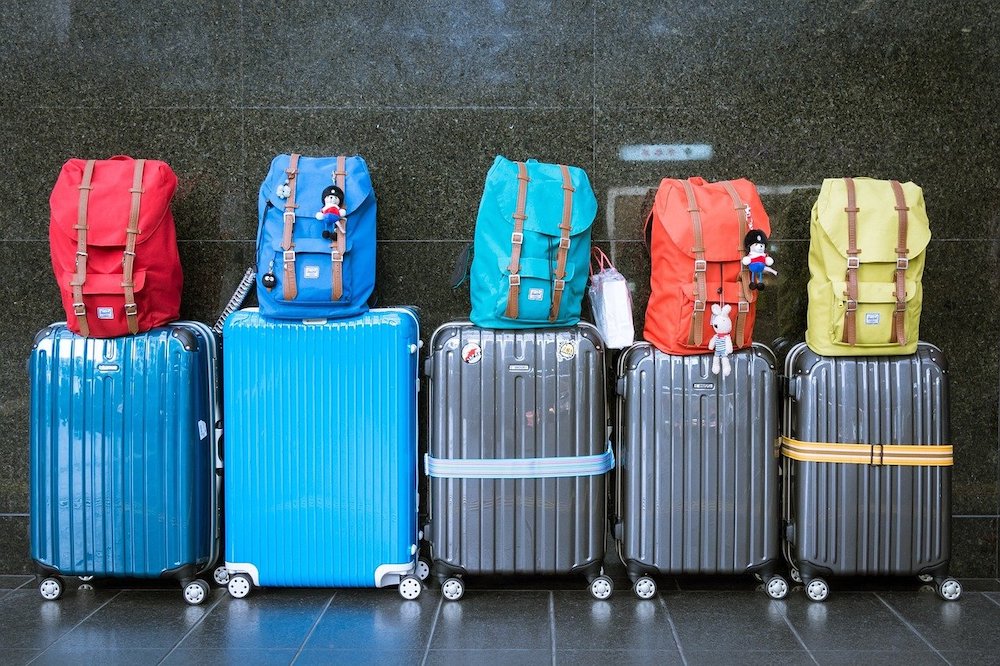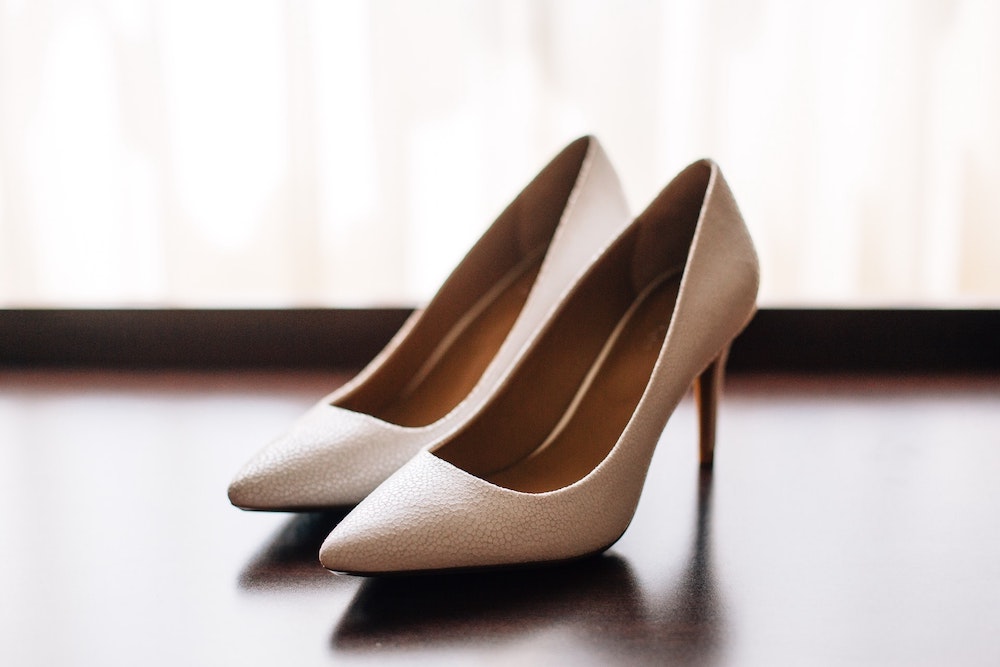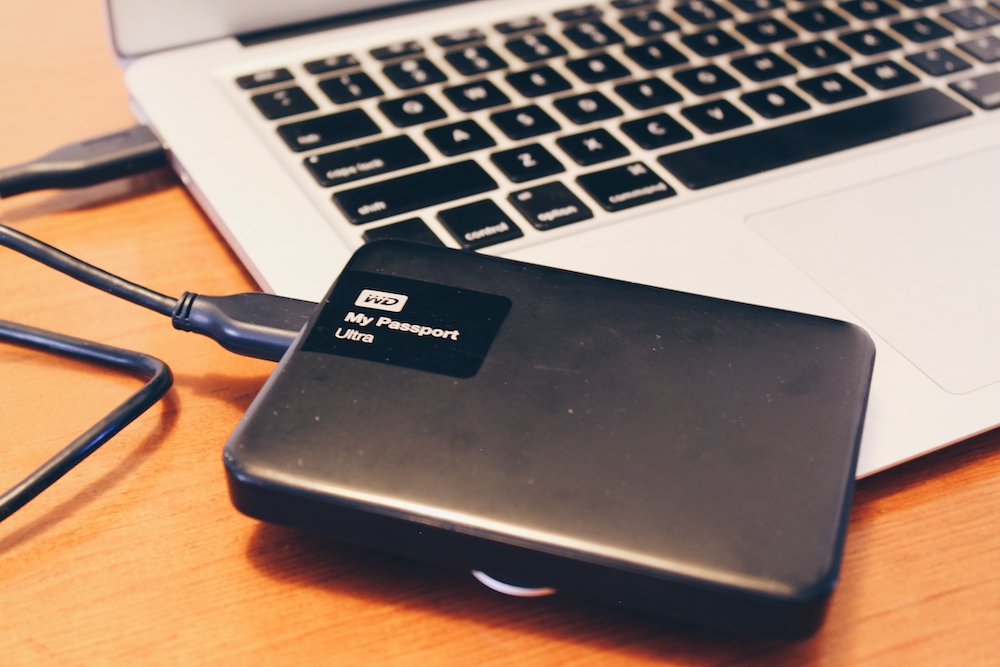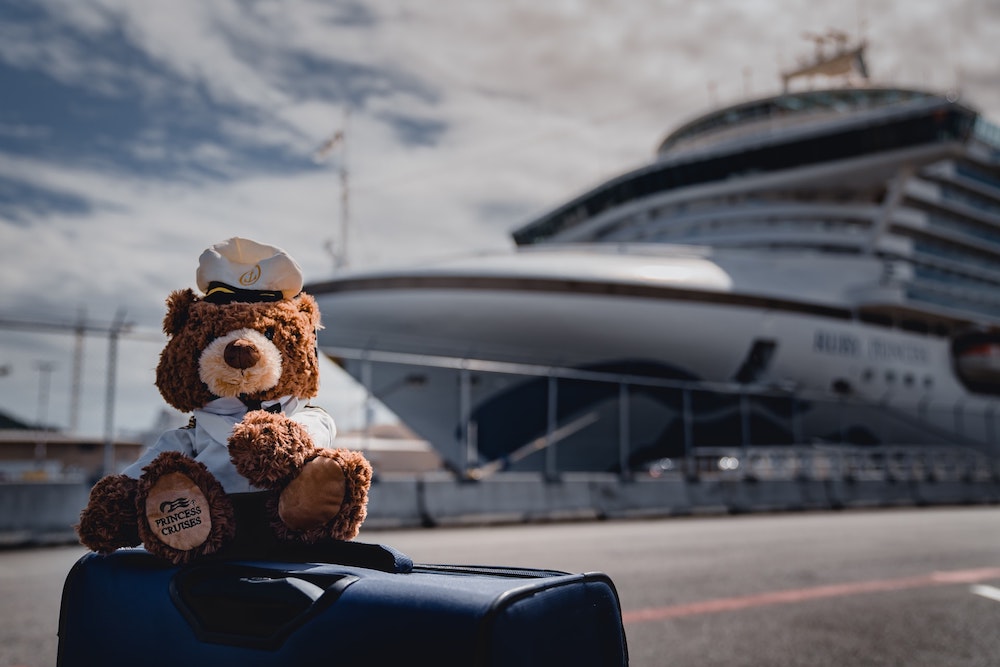
If you’ve finally secured your first ship contract, congrats! Now you’re probably wondering what to pack when working on a cruise ship.
After getting a job on cruise ships and working onboard for a little over three years across six ships, I’ve put together this crew packing list for first-timers to help out any new seafarers looking for a bit of advice.
A general preface before I get started: remember to take into account what your onboard position is and what your own requirements are.
Be sure to ask your recruiter or hiring partner if you’re not sure about something because they will have more insight specific for your position than some random crew member writing on the internet.
(My job onboard was a youth staff/counselor aka underpaid babysitter to 1500 kids and all-around clown on puppet strings if anyone is wondering.)
Related: What Working on Cruise Ships is Really Like
How Much Should I Pack for My First Contract?

Let’s start with the most basic questions that typically come up when determining what to pack for working on a cruise ship:
- How much should I pack?
- What’s my luggage weight allowance?
- How much do crew members usually pack?
- What size of luggage will fit into my cabin?
I got you, fam
There are a good number of crew members who bring two large suitcases, but I think that’s a bit excessive and not so much fun when you have an over-packer for a roommate.
But in general, the average that people bring, and what I’d recommend is one large bag (50 lbs/ 23kg check-in limit), one smaller bag (carry-on size), and a backpack (carry-on personal item).
Keep in mind that where you fly to for the beginning of your contract may not be the same destination you’ll be flying out of to return home and this may incur additional baggage fees not covered by your company should you pack any more than I suggested.
For example: even if you get extra baggage allowance since you’re flying from the US to Europe to embark, you might be on a domestic flight home after the ship has crossed to the States, thus saddling you with excess baggage fees.
Just something to think about.
What Type of Luggage is Best for Working on Ships?

The most ideal luggage would be something collapsable like a duffel bag with wheels or ones that can nest within each other for optimal space-saving.
I highly DO NOT recommend hard case suitcases (the ones pictured above) as I’ve seen nearly every roommate of mine struggle to squeeze them under the bed.
Because they don’t squish down like soft-shell suitcases, sometimes the only place to store them is beside a wall in the cabin, taking up precious real estate.
Nonetheless, many crew members do opt for plastic suitcases due to its durability.
If you absolutely must bring a hard-shell suitcase (maybe it’s the only one you have, in which case I wouldn’t suggest spending extra money on getting another one just for this contract), a pro-tip when it comes to storing it in your room is to open it up completely like a book and put it under the bed unzipped.
It’s not the most ideal way to store it, but at least it’s out of sight and your roommate won’t hate you for taking up extra space in the cabin.
What to Pack in Your Carry-On
AKA: the most important things you absolutely cannot board your ship and start your contract without.
Chances are you will be traveling many hours over several flights to reach your ship. And while I hope for nothing but the best for you and your belongings, statistically speaking, there’s a good chance some of your stuff will get lost.
I’ve seen this happen to more than a few crew members, where they have to embark with literally nothing other than what they have on their backs.
One couple I know went a month without their luggage.
I always travel with a few extra pairs of underwear in my carry-on personal item (not even the carry-on luggage) because on nearly every flight I’ve taken in the last few years, I’ve been asked to check in my small carry-on suitcase due to running out of overhead bin space.
Us crew members or the crew store can always help provide extra shampoo or deodorant if your things don’t end up on the ship with you, but underwear and medication are a little different.
TL;DR: make sure you pack these things on your person, literally on your back, in your personal items bag (preferably a backpack), and never EVER check in these items:
- Passport
- Seaman’s book (if applicable)
- Letter of Employment
- Medical clearance/ certificate
- Safety certifications (STCW)
- Itinerary (flight info, pick up info, hotel details)
- Phone number for your transit point of contact
- Medication
- A few pairs of underwear and socks
- One pair of your uniform
- Cash/cards (enough cash for at least 2 weeks onboard and in ports)
- Any expensive electronics
TIP: Take a picture of all your documents as well as your luggage and save it in a cloud account so you always have access to these things should they go missing.
Essential Things to Pack

TIP: Packing cubes make packing so much easier. I use them to separate my clothes and label them (uniform, undies, etc.) so I never have to guess what’s where when I need it. This is especially helpful on your first day when you might not have much time to unpack and change for work.
Uniform (or Space For It)
If you’re a new hire, you may not get all of your uniform items until you get onboard.
In that case, save a good portion of your luggage space for it so that you can carry it home after your contract.
Your recruiter or hiring partner will have sent you a list of all other uniform clothing items you’ll need to bring, and unfortunately, this list will most likely be way more than you actually need.
Just keep in mind that the list they give you is generalized across the fleet and some ships make use of certain uniform items and others don’t.
It’s just something you have to suck up and accept as a newbie that you’ll be lugging around extra crap you won’t ever use in your first contract.
Underwear and Socks
Pack more than a week’s worth if you can. The more, the merrier.
Even if you’re the most disciplined, responsible human who always does laundry every week, sometimes it’s just not possible onboard.
From exhausting schedules to a limited number of washers and dryers, just because you want to do your laundry at a certain time doesn’t always mean you can.
Shoes

Uniform Shoes
Repeat after me: comfort over style.
You’ll be in these shoes every day for 9-11 hours, 4-9 months straight.
If your feet aren’t happy, your body won’t be happy, you won’t be happy, and your guests won’t be happy.
Casual and/or Gym Shoes
Remember that space in your room and luggage is limited, so you’ll want a pair of shoes that can be used for more than one occasion (or just don’t go to the gym, that works too).
Formal Shoes
Depending on your rank, you may be allowed to be in the guest areas as long as you’re dressed in the appropriate attire.
(You can read more about that and all the other fun things about crew life here.)
But chances are, if you are allowed, formalwear will also be part of your uniform since you’ll probably have evening duties around the ship with guests.
TIP: Ladies, again, you don’t need several pairs of heels. Find one pair (closed-toe) that goes with all of your smart casual and formal clothing, typically in nude or black.
Sandals
Check your itinerary, but chances are you’ll be docking in beachy ports, probably in the Caribbean. If you plan on going to the beach, pack some sandals.
Smart Casual and Formal Clothes
As I noted earlier, if you work in the entertainment division or other front of the house departments, you may be required to bring along evening attire as part of your uniform.
For Royal Caribbean, the evening attire for the last night of the cruise for crew on some ships was “all black,” so I made sure I always had this covered with either an all-black smart casual outfit or cocktail dress, both of which—again— could be worn for several occasions.
Here’s what I typically pack for this category:
- 1 pair of black slacks (jeans aren’t allowed in guest areas)
- 2 blouses (one of which was of course black)
- 1-2 cocktail dresses (one– you got it– in black)
- 1 floor-length gown
TIP: If your position is not activity host/cruise staff, I would only suggest you bring one formal gown as you most likely won’t be needing it often enough to warrant spending an extra $100+ on a second one.
With Royal, only the first formal night of the cruise required us to wear a dress past the knee. Cocktail dresses were allowed the following formal nights within the same cruise.
Personal Clothes

This category includes off-duty clothes, gym wear, and swim attire.
Look at your itinerary for the entirety of your contract and do a quick check on the weather you’ll be experiencing in those places at the time you’ll be visiting.
Then, pack accordingly.
Remember that you might start your contract in one season and finish in a completely different climate. Sometimes this can even happen within a single cruise.
Again, my rule is to pack items that can be worn with almost any other article of clothing I’m bringing.
If you’re feeling overwhelmed or unsure about how to limit the amount of clothing you plan on packing, a quick search on Pinterest for “capsule wardrobes” can be helpful.
Here’s an example of what and how much personal clothing I typically pack for a 5-month contract in the Caribbean:
- 1 white camisole (also used under some smart casual blouses that are a little sheer)
- 1 black tank top
- 3 t-shirts (one either black or white, one with minimal print/design, and one wildcard)
- 2 pairs of denim shorts (black and light blue)
- 2 rompers
- 1 set of pajamas
- 1 thin flannel shirt (used for layering or inside the AC-blasted ship)
- 1 pair of lounge pants (joggers or leggings)
- 2 gym tank tops
- 1 pair of gym shorts
- 1 pair of gym leggings
- 2 bikinis (that can– and have– served as emergency undies when I couldn’t get my laundry done)
- 1 sarong (can also be used as a towel, scarf, or picnic blanket)
- 1 windbreaker (used mostly in transit to and from foggy San Francisco)
Toiletries and Personal Care Items

Here are some basic toiletries you should ensure you have:
- Toothbrush and toothpaste
- Shampoo and conditioner
- Soap/ body wash
- Razor
- Lotion and moisturizer
- Gel/ hairspray (if you use it)
- Hairbrush/ comb
TIP: Pack small, travel-sized bottles of shampoo, conditioner, and lotions as they end up adding a few precious pounds to your luggage and you can buy the full-sized version of these items in most ports.
Makeup
Keep it to a small pouch, and only the basics.
Remember that you probably won’t have the time or energy to be spending more than 10 minutes getting ready in the morning, so if you’re a makeup wearer, I’d recommend bringing just the essentials— whatever that may be for you.
While I typically don’t wear makeup at work around the kids (besides a quick swipe of concealer or foundation on my rosacea-prone cheeks), I did have a basic kit for looking presentable during evening duties around the ship.
These are the makeup essentials that I brought to every contract:
- 1 foundation
- 1 liquid concealer
- 1 color-correcting BB cream (for my red cheeks that also doubled as a primer)
- 1 red lip product
- 1 eyeshadow quad (black, gray, brown, taupe)
- 1 eyebrow pencil
- 1 black eyeliner
- 1 waterproof mascara (2 if I thought I’d need more as I use a specific brand not sold in drugstores that’s a miracle for my Asian, smudge-prone monolids)
- 1 blush
If you’re looking for a more all-in-one solution, check out my favorite all-in-one palette.
Hairdryer
BRING ONE.
This small travel-sized dryer goes with me everywhere and every roommate I’ve ever had has always asked to borrow it.
Even if you like drying your hair naturally, there will be times when you absolutely need to shower and wash your hair before heading to your next shift. (Coming back from the beach, for example.)
Wet hair at work is absolutely unacceptable and your manager may even write you up for showing up to work looking unprofessional.
Over-Door Hooks and S-Hooks
Space is limited and closets are small, so having extra places to hang your towel or clothes is every bit helpful.
I always bring two for my closet and one for the bathroom door.
S-hooks and over-door hooks can easily be purchased at any dollar store (I get mine at the Japanese $1.50 store Daiso) and don’t take up any luggage space.
Zippered Mesh Laundry Bags
I haven’t seen any other crew member use these bags, but I think they’re amazing and I always make sure to bring a few to every contract.
I normally use them for my undies, bras, and socks for three reasons:
- To make moving items from the washer to dryer easier and more efficient.
- To make sure I don’t accidentally lose a sock or those sports bra foam inserts randomly.
- **And this is the most important** To make sure other people aren’t touching my underwear.
It’s understood among crew that if you’re not there to move your clothes immediately to the dryer once the wash cycle is completed, any crew member next in line is allowed to move it for you.
Same with the dryer, except people will stop your drying cycle to see if it’s done and take it out since some people set the timer for over an hour when it’s not needed.
Period Products

I’m going to be real with you ladies.
Ships absolutely wrecked my hormones to the point where I have my period every other week onboard.
I’ve talked about this before about how ships affect everyone’s health differently, so there’s really no preparing or telling how it may (or may not) affect you.
I found that the best way for me to deal with this was by regulating my period through birth control and investing in a reusable menstrual cup to save money on tampons.
Again, find what works for you; but in my opinion, something that is reusable (i.e. menstrual cups or period panties) is not only great for the environment, but also your wallet and luggage space.
Ear Plugs
You’ll likely have a roommate, and not getting good enough sleep due to your roommate’s snoring isn’t an excuse for poor work performance.
Sleep Mask
If the dimmest light wakes you, get yourself something to cover your eyes.
Ideally, you’ll be able to work out a compromise or agreement with your roommate as to how you’ll deal with entering the cabin and which lights are acceptable to use after the other person is in bed, but don’t bank on it.
I had one roommate request that I not use the bathroom (shower, toilet, or sink) after she’d gone to bed (which for her was like 10 p.m.) as she’s easily woken by any light or sound, to which I offered to help her find a sleep mask as most of my shifts ended well after midnight.
Eye Care

The air on ships destroyed my eyes.
With every ship contract, my eyes became drier, redder, and less tolerant of my contacts so much to the point where by my final contract I couldn’t wear them at all.
And upon seeing if laser correction could be an option, the doctors said they’d have to bring my eye’s health up first as it was some of the driest and worst they’d seen.
To paint a picture, it was as if I was looking out a very dirty window 24/7. Like extremely chapped lips, but on my cornea.
They recommended I use this eye gel (not regular drops) daily for a month and, my God, what a difference it made for me just using it alone.
Now I don’t go anywhere without it.
So if you’re worried about dry eyes on ships, planes, or even Antarctica (where I took my trusty eye gel drops), get yourself a bottle or two of this miracle potion.
Your eyes will thank you.
Reusable Water Bottle
A reusable water bottle keeps you from having to purchase bottled water onboard. There are usually a few refill stations around the ship’s crew area to keep you hydrated.
Electronics

Laptop/ Tablet
You probably don’t need both, but assess your needs and decide for yourself.
I used my laptop primarily for watching movies and TV shows, although I also used it one contract just for the internet as the ship’s internet refused to connect with my phone for the entire five months.
Since I’m not a gamer and just need the basics out of a laptop that’s thin, lightweight, and travels well, I have a MacBook Air that has yet to fail me after four years and six ship contracts.
Tablets are obviously smaller and easier to pack, so if you have one that you use regularly, bring it.
External Hard Drive

Make sure you fill your hard drive with all your favorite movies, TV shows, and music while you have fast Wi-Fi at home.
You’ll be so grateful you did after the excitement of ships wears down within a few weeks onboard.
Also, it’s good to have an external hard drive to back up everything. Because things do— and probably will— go wrong, and you don’t want to risk it.
USB Memory Stick
A thumb drive with decent storage (I have a simple 8gb one I always carry) is great especially when you’re a new hire because you can get a digital copy of any work materials or extra information on your department’s system and review it at your leisure.
I found this to be helpful when learning about all the kids games we had to host as well as the dance routines we had to perform with the other entertainment staff during the cruise’s themed nights.
It’s also great for passing around movies and shows with other crew members without having to loan out your hard drive.
Alarm Clock or Watch
I use my phone as an alarm, but some prefer an alarm clock as phones have a tendency to screw up during time zone changes on ships, often leading to crew members being late (or early!) for work.
You can use your phone in crew areas, but once in guest areas (most likely where you work), phones are to be completely invisible.
So it’s a good idea to bring a watch along to make sure you’re always on time and performing your duties according to schedule.
TIP: Once onboard, make sure to sync all your electronics to ship time as that is the official time everything runs on regardless of the time on land or according to the internet.
Camera

You’ll be visiting some really beautiful places; make sure you document them properly!
Again, I’d recommend looking at your itinerary and judging from there what gear you’ll want to bring.
Keep in mind that professional DSLRs are great, but if you’re going to beachy destinations with the intent of being in the water most of the time, maybe leave the nice camera at home and bring a GoPro instead.
For my first and last contract, I looked up my itinerary and realized there were several destinations that would require a good amount of zoom to take a decent picture— so I lugged along my Canon EOS Rebel just for the handful of pictures I took (and don’t regret!).
I relied on my trusty phone’s amazing camera for the rest of my contracts, and as most phones go these days, they more than sufficed.
Universal Adapter
Most American-based cruise lines have American-style plugs onboard, but a universal adapter comes in handy if you’re traveling abroad to meet your ship.
Small Power Strip
Outlets in cabins are precious real estate, so be the hero in your room and bring a small power strip. One that has USB charging on it is especially helpful if you have several devices.
Just be sure to not overload your cabin outlets and remember to unplug your devices after they’re charged, even the power strip, as that’s a common fire starter on ships (and will fail both you and your roommate during cabin inspection).
Extension Cable or Chargers with Long Cords
Chances are, you’ll be on the top bunk for your first few months until your roommate moves out.
(Social protocol on ships is newbie get top bunk until the more senior roomie leaves.)
This means you’ll be farther away from the outlet.
If you’re like me and like to use your phone from the bed, I’d recommend looking into a charging cable that’s at least 6 ft. in length.
Nonessential Items to Pack If You Have Room
AKA things that significantly enhance your contract and ship life.

There a quite a few items I’ve learned are essential for my comfort during contracts, but not really necessities.
They do, however, improve my life, attitude, and general pleasantness when I’m at sea for 5+ months at a time.
Again, these are just things I recommend, but take a look at my list and build/edit what you’ll actually bring according to your needs.
Hot Beverage Thermos
If you’re a tea or coffee drinker, this is pretty much a no brainer.
Collapsable Closet Organizer
You probably already know that crew cabins are small, so it should be no surprise that your wardrobe closet will be small as well. Most have 2-3 small drawers below a hanging area.
I’ve found that bringing a hanging shoe organizer like this allows me to easily store all my stuff without taking up too much of my closet.
Bonus points for being lightweight and travel-friendly.
Personal Bedding

While bed sheets, blankets, and pillowcases are provided for, there’s just something about having the familiarity and comfort of your own personal bedding.
Your bunk is the only personal space you have, so I like to make it as cozy and comfortable as possible even if it takes up some precious luggage space.
Even the cheapest of bed sheets and pillowcases will be miles more comfortable than the used ones they have for crew onboard.
I always bring a microplush blanket that easily packs down and doesn’t take up too much weight.
Vacuum Sealing Bags
Wondering how you’ll be able to pack these bulky items? Get yourself one or two of these large vacuum-sealed, space-saving bags.
I typically just use one for my blanket and I’m able to stuff my bedsheets into a packing cube.
Towel
Again, towels are provided, but I just prefer to bring my own.
I have this set of travel microfiber towels that rolls into a small, convenient pouch and takes up hardly any space at all.
And an added bonus is that since they’re so thin, they dry super quick so my room doesn’t end up with that damp, moldy towel smell.
Portable Mini Steamer
There are irons for you to use in the crew laundry, but if a lot of your clothes or uniforms require ironing, a mini steamer can do wonders.
Twinkle Lights

Make your cabin (or bunk) a cozy oasis.
These are usually small and easy to pack, but just make sure they’re battery-operated (the only ones allowed onboard for fire safety purposes).
Lock
Every cabin comes with two small lock boxes, but you’ll need to bring your own lock.
While this isn’t a problem so much anymore, in years past crew paychecks were actually given out in cash, so keeping it out of sticky roommate hands was more of an issue.
I’ve personally never had to lock anything away, but it can’t hurt. Especially since you won’t know your roommate before you move it.
Mini Speaker
A completely nonessential item, but portable speakers do make cabin parties and beach trips more fun.
Outfits
In addition to the typical holiday festivities, crew parties are always happening. If you like dressing up and you have some extra room, bring a few of your best party costumes.
Comfort items

You’ll be away from family and friends for a long time.
It’s worth the extra luggage space to bring something that helps you relax and puts a smile on your face.
I like to bring a few hydrating face mask sheets and a small stuffed animal, but I’ve seen crew members bring snacks, photos, video games and consoles like the PS4 and Switch, and even a personal pillow.
Final Thoughts
And now that you know what to pack for working on a cruise ship, you’re ready to embark (literally and figuratively) on your new journey!
You might be feeling overwhelmed, but that’s totally normal.
As long as you pack the essentials and more or less try to stick to the packing tips I’ve laid out, you’ll be fine.
Happy contract and bon voyage!
Fellow crew members, is there anything else that should be on this list? Let me know so I can add it and help our eager new hires out!
Pin and Save This Post








I found this to be SUPER helpful! I start my contract with Royal Caribbean next weekend and this is a super helpful resource. I’ve been watching some YouTube videos and they just don’t quite have as much helpful information. THANK YOU!
You’re very welcome! So happy I could help and congrats on your first contract!!! I loved my time with RCL and I’m sure you will as well :)
I thought about bringing the menstrual cup with me, but, how do you keep it clean? Can you boil it somewhere?
I just used a gentle, fragrance-free soap with hot water and never ran into any issues. But there are portable menstrual cup sterilizers available that you could try out too.
This has really helped! I start on the Pacific Encounter on Wednesday(found out yesterday) and its my first contract. Super nervous but excited.
In regards to uniform, what shoes would you recommend? Also, if you’ve ever had to pay for visas, medicals etc, how quickly do they pay this back to you? They’ve jut said I will get it reimbursed on the ship.
Hi Charlotte,
Wow, how exciting– congrats on your contract!
Uniform shoes will depend on your position/requirements, which your recruiter should have informed you about. If you don’t have that info, I’d suggest getting in touch with them as every company and department differ. The same goes for reimbursements. It was fairly quick for me with Royal Caribbean (within a month), but this will vary by company.
Thanks for sharing. Helpful 🙂
Hello, Thank you for your information.
Really very helpful ,found in time will help me what type of uniform should i carry for reception department as it is my 1st contract . Also for period is it safe & comfortable to use sanitary pads onboard?
Glad I could help! Great question. You can use any type of sanitary products that you’re most comfortable with. The crew store should have both tampons and pads available for purchase.
I read all your articles. Thank you, they were very insightful and I’ll be starting my 1st assignment with Norwegian in a few months( 🤞still gotta get my background check and physical done). Anyways, my desire was to be out away from home for a bit but not in the public eye so I asked for a dishwasher job. I read you used the menstrual cup, how did you clean it( aren’t you supposed to rinse after each use) and how are the cruise ships on bathroom breaks?
Congratulations on your contract! I hope it’s a good one.
For my period cup, I washed it in my cabin bathroom with soap and hot water. You should have no problem with reasonable bathroom breaks while working.